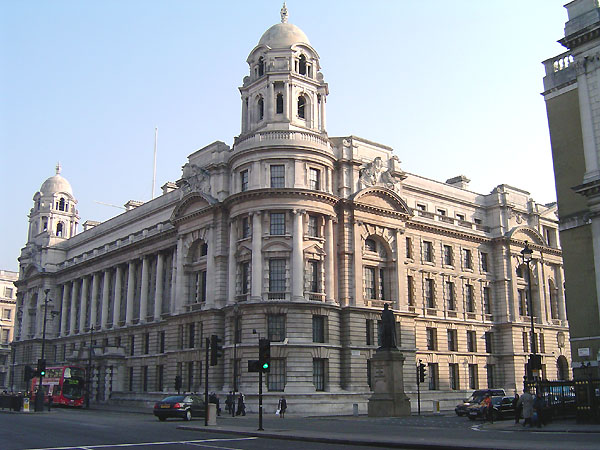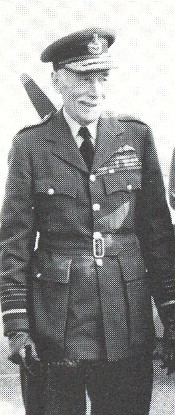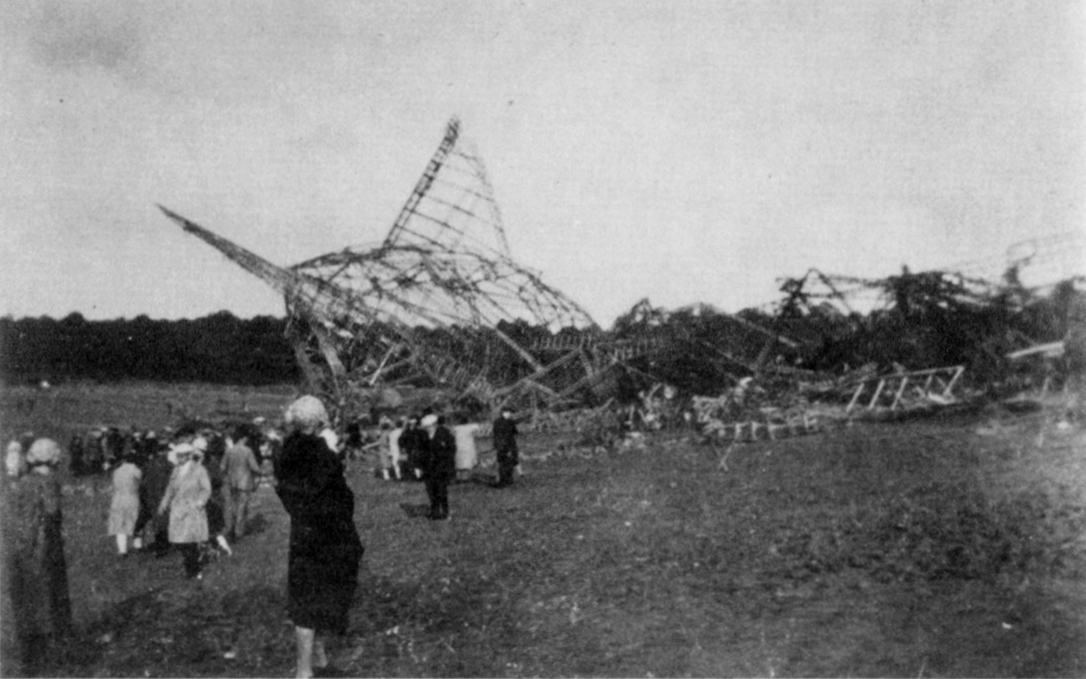|
Directorate Of Military Aeronautics
The Directorate of Military Aeronautics was the British War Office department responsible for military aviation before and during World War I. It functions were subsumed into the Air Ministry when the Royal Air Force The Royal Air Force (RAF) is the Air force, air and space force of the United Kingdom, British Overseas Territories and Crown Dependencies. It was formed towards the end of the World War I, First World War on 1 April 1918, on the merger of t ... was created in 1918. The Directorate was headed by a Director-General. The following officers held the post: * Sir David Henderson (1913–17) * J M Salmond (1917–18) * E L Ellington (1918) In 1917 the post of Deputy Director-General of Military Aeronautics was established. The following held that post: * W S Brancker (1917) * E L Ellington (1917–18) References {{reflist British military aviation War Office ... [...More Info...] [...Related Items...] OR: [Wikipedia] [Google] [Baidu] |
War Office
The War Office has referred to several British government organisations throughout history, all relating to the army. It was a department of the British Government responsible for the administration of the British Army between 1857 and 1964, at which point its functions were transferred to the new Ministry of Defence (United Kingdom), Ministry of Defence (MoD). This article contains text from this source, which is available under th Open Government Licence v3.0 © Crown copyright It was equivalent to the Admiralty (United Kingdom), Admiralty at that time, which was responsible for the Royal Navy (RN), and (much later) the Air Ministry, which oversaw the Royal Air Force (RAF). The name 'Old War Office' is also given to the former home of the department, located at the junction of Horse Guards Avenue and Whitehall in central London. The landmark building was sold on 1 March 2016 by HM Government for more than British pound, £350 million, on a 250-year lease for conversion int ... [...More Info...] [...Related Items...] OR: [Wikipedia] [Google] [Baidu] |
Military Aviation
Military aviation is the design, development and use of military aircraft and other flying machines for the purposes of conducting or enabling aerial warfare, including national airlift (air cargo) capacity to provide military logistics, logistical supply to forces stationed in a Theater (warfare), war theater or along a Front (military), front. Airpower includes the national means of conducting such warfare, including the intersection of transport and warcraft. Military aircraft include bombers, fighter aircraft, fighters, Military transport aircraft, transports, trainer aircraft, and reconnaissance aircraft. History The first military uses of aviation involved lighter-than-air balloons. During the Battle of Fleurus (1794), Battle of Fleurus in 1794, the French observation balloon ''l'Entreprenant'' was used to monitor Austrian troop movements. The use of lighter-than-air aircraft in warfare became prevalent in the 19th century, including regular use in the American Civil W ... [...More Info...] [...Related Items...] OR: [Wikipedia] [Google] [Baidu] |
World War I
World War I or the First World War (28 July 1914 – 11 November 1918), also known as the Great War, was a World war, global conflict between two coalitions: the Allies of World War I, Allies (or Entente) and the Central Powers. Fighting took place mainly in European theatre of World War I, Europe and the Middle Eastern theatre of World War I, Middle East, as well as in parts of African theatre of World War I, Africa and the Asian and Pacific theatre of World War I, Asia-Pacific, and in Europe was characterised by trench warfare; the widespread use of Artillery of World War I, artillery, machine guns, and Chemical weapons in World War I, chemical weapons (gas); and the introductions of Tanks in World War I, tanks and Aviation in World War I, aircraft. World War I was one of the List of wars by death toll, deadliest conflicts in history, resulting in an estimated World War I casualties, 10 million military dead and more than 20 million wounded, plus some 10 million civilian de ... [...More Info...] [...Related Items...] OR: [Wikipedia] [Google] [Baidu] |
Air Ministry
The Air Ministry was a department of the Government of the United Kingdom with the responsibility of managing the affairs of the Royal Air Force and civil aviation that existed from 1918 to 1964. It was under the political authority of the Secretary of State for Air. Organisations before the Air Ministry The Air Committee On 13 April 1912, less than two weeks after the creation of the Royal Flying Corps (which initially consisted of both a naval and a military wing), an Air Committee was established to act as an intermediary between the Admiralty and the War Office in matters relating to aviation. The new Air Committee was composed of representatives of the two war ministries, and although it could make recommendations, it lacked executive authority. The recommendations of the Air Committee had to be ratified by the Admiralty Board and the Imperial General Staff and, in consequence, the Committee was not particularly effective. The increasing separation of army and n ... [...More Info...] [...Related Items...] OR: [Wikipedia] [Google] [Baidu] |
Royal Air Force
The Royal Air Force (RAF) is the Air force, air and space force of the United Kingdom, British Overseas Territories and Crown Dependencies. It was formed towards the end of the World War I, First World War on 1 April 1918, on the merger of the Royal Flying Corps (RFC) and the Royal Naval Air Service (RNAS). Following the Allies of World War I, Allied victory over the Central Powers in 1918, the RAF emerged as the largest air force in the world at the time. Since its formation, the RAF has played History of the Royal Air Force, a significant role in Military history of the United Kingdom, British military history. In particular, during the Second World War, the RAF established Air supremacy, air superiority over Nazi Germany's Luftwaffe during the Battle of Britain, and led the Allied strategic bombing effort. The RAF's mission is to support the objectives of the British Ministry of Defence (United Kingdom), Ministry of Defence (MOD), which are to "provide the capabilities nee ... [...More Info...] [...Related Items...] OR: [Wikipedia] [Google] [Baidu] |
David Henderson (British Army Officer)
Lieutenant General Sir David Henderson, (11 August 1862 – 17 August 1921) was the senior leader of British military aviation during the First World War, having previously established himself as the leading authority on tactical intelligence in the British Army. He served as the commander of the Royal Flying Corps in the field during the first year of the First World War, and was instrumental in establishing the Royal Air Force as an independent service. After the war Henderson was the first Director-General of the League of Red Cross Societies. Early and family life David Henderson was born in Glasgow on 11 August 1862 into a ship-owning family. His father, also called David Henderson, was a joint owner of the Clydeside ship builders David and William Henderson and Company. Henderson entered the University of Glasgow in 1877 at the age of just 15. While there, he read engineering and in his fourth year (1880–1881) he studied civil engineering and mechanics as well as offi ... [...More Info...] [...Related Items...] OR: [Wikipedia] [Google] [Baidu] |
John Salmond
Marshal of the Royal Air Force Sir John Maitland Salmond, (17 July 1881 – 16 April 1968) was a British military officer who rose to high rank in the Royal Flying Corps and then the Royal Air Force. During the First World War he served as a squadron commander, a wing commander and then as General Officer Commanding the RAF on the Western Front towards the end of the war. He went on to be Air Officer Commanding British Forces in Iraq in the early 1920s when he halted a Turkish invasion and sought to put down a Kurdish uprising against King Faisal, the British-sponsored ruler of Iraq. He was Chief of the Air Staff in the early 1930s and bitterly opposed the position taken by British politicians at the World Disarmament Conference in Geneva, which would have led to the UK's complete aerial disarmament. In the event the talks broke down when Adolf Hitler withdrew from the Conference in October 1933. Early life John Salmond was born the son of Major General Sir William Salmon ... [...More Info...] [...Related Items...] OR: [Wikipedia] [Google] [Baidu] |
Edward Ellington
Marshal of the Royal Air Force Sir Edward Leonard Ellington, (30 December 1877 – 13 June 1967) was a senior officer in the Royal Air Force. He served in the First World War as a staff officer and then as director-general of military aeronautics and subsequently as controller-general of equipment. In the inter-war years he held command positions in the Middle East, in India and then in Iraq. He served as Chief of the Air Staff in the mid-1930s and in that role he implemented a plan, known as 'Scheme F'. This scheme implemented an increase in the size of the Royal Air Force to 187 squadrons (five bomber squadrons for every two fighter squadrons, reflecting the dominance of the bomber strategy at the time) within three years to counter the threat from Hitler's Germany. He also broke up the command known as "Air Defence of Great Britain" to create RAF Fighter Command, RAF Bomber Command, RAF Coastal Command and RAF Training Command. He then served as Inspector-General of the R ... [...More Info...] [...Related Items...] OR: [Wikipedia] [Google] [Baidu] |
Sefton Brancker
Air Vice Marshal Sir William Sefton Brancker, (22 March 1877 – 5 October 1930) was a British pioneer in civil and military aviation and senior officer of the Royal Flying Corps and later Royal Air Force. He was killed in an airship crash in 1930, exactly 20 years after his first flight. Early life Sefton Brancker was born in Woolwich, the eldest son of Col. William Godeffroy Brancker and Hester Adelaide, the daughter of Major General Henry Charles Russell. Brancker grew up as the elder of two brothers; their father died in 1885. From 1891 to 1894, the young Brancker attended Bedford School. His father was born in Hamburg to a British father and German mother; the Branckers were a long-established Anglo-German family that had lived in England for several generations. On 7 April 1907, he married May Wynne, the daughter of Colonel Spencer Field of the Royal Warwickshire regiment; they had one son, also called William Sefton Brancker. Military career Brancker was trained fo ... [...More Info...] [...Related Items...] OR: [Wikipedia] [Google] [Baidu] |
British Military Aviation
British may refer to: Peoples, culture, and language * British people, nationals or natives of the United Kingdom, British Overseas Territories and Crown Dependencies. * British national identity, the characteristics of British people and culture * British English, the English language as spoken and written in United Kingdom of Great Britain and Northern Ireland and, more broadly, throughout the British Isles * Celtic Britons, an ancient ethno-linguistic group * Brittonic languages, a branch of the Insular Celtic language family (formerly called British) ** Common Brittonic, an ancient language Other uses *People or things associated with: ** Great Britain, an island ** British Isles, an island group ** United Kingdom, a sovereign state ** British Empire, a historical global colonial empire ** Kingdom of Great Britain (1707–1800) ** United Kingdom of Great Britain and Ireland (1801–1922) * British Raj, colonial India under the British Empire * British Hong Kong, colonial Ho ... [...More Info...] [...Related Items...] OR: [Wikipedia] [Google] [Baidu] |





